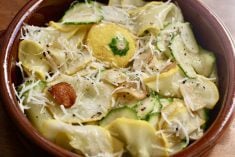We were at home with our grandkids this New Year’s eve, while their parents went out for supper and to
a dance.
What developed was the second annual New Year’s Eve street hockey game in front of our house. It was a cold night and so our house became the “club house” where the kids came in often to warm up, for a hot drink and food.
Other houses nearby also had grandkids being looked after by their grandparents. It was great fun watching the enthusiasm of the rosy-cheeked little people coming and going through the door. Their goal was to play until midnight and a few did just that.
Read Also

Farm auctions evolve with the times
Times have changed. The number of live, on-farm auctions is seeing a drastic decline in recent years. Today’s younger farmers may actually never experience going to one.
When the countdown approached zero they ran into the street and fired off their confetti type fireworks. The neighbours, no doubt, wondered about this grandma allowing her grandkids to stay up so late, running in the street. The next day we sent tired little souls home to their parents, ready to start 2005.
Easter bread
Dear TEAM: My sister receives the Western Producer and she suggested I write to you in my search for a recipe for Finnish Easter bread. Years ago, the recipe was in Woman’s Day magazine, which I misplaced, and Woman’s Day told me they don’t have back copies. I’ve tried four different ones I’ve found, but none is as good. It’s a braided dough, with cardamom in it, and sugar sprinkled on top. Ñ B.M., Drumheller, Alta.
Dear B.M.: Would the following recipe be like the one you had years ago? I tried it and thought it was tasty. I found two other recipes that are similar, one for a bread machine, so I will send them to you by mail.
Cardamom bread
2 packages traditional 22 mL
active dry yeast
(4 1Ú2 teaspoons)
2 cups warm water 500 mL
1 egg, room temperature
6 cups flour 1.5 L
1Ú2 teaspoon ground 2 mL
cardamom
1Ú3 cup sugar 75 mL
2 teaspoons salt 10 mL
1Ú4 cup soft butter or 60 mL
shortening
icing sugar or thin icing
Sprinkle yeast on warm water; stir to dissolve. Blend in egg, three cups (750 mL) flour, cardamom, sugar and salt. Beat with mixer at medium speed about two minutes until batter is smooth.
Add butter and enough remaining flour, a little at a time, first with spoon and then by hand, to make a fairly soft dough that leaves the sides of the bowl. Turn onto lightly floured board. Knead until smooth and elastic, about eight minutes. Place in greased bowl and turn dough over to grease top. Cover and let rise in warm place until doubled, about one hour. Punch down dough, turn over, cover and let rest 10 minutes.
Turn out onto board and divide in half. Cut each half into three equal parts. Roll each part underhand to make a strip 11-12 inches (27.5-30 cm) long. Braid three strips, pinching ends to seal.
Place on greased cookie sheet. Repeat with remaining three strips. Cover and let rise in warm place until doubled, about 45 minutes.
Bake in 375 F (190 C) oven for 25-30 minutes, covering with sheet of foil during last 15 minutes to prevent it from browning too much. Remove from pan and place on wire cooling racks. After loaves are slightly cooled, brush with confectioners’ icing or icing sugar.
Options:
- Turn risen dough onto board; divide into two parts. Shape into two loaves and place in two greased nine inch (22 cm) round layer cake pans or regular bread loaf pans. Make about four slashes on tops of loaves with a sharp knife. Cover, let rise until doubled; bake and cool, as in the recipe above. Omit icing. Makes awesome toast.
- Instead of brushing with confectioners’ icing sugar after baking, glaze braided loaves just before baking with one beaten egg and sprinkle with granulated sugar.
Source: Adapted www.fooddown under.com.
Pickled garlic turning blue
Dear TEAM: I was interested in the problem of pickled garlic turning blue. I’ve had that happen in my dills, made with boiled bottled water. I made the pickled garlic using the recipe in your column and believe it or not, the garlic turned a blue green colour. It is a puzzle. Could it be the quality of the garlic? Mine had been stored a couple of weeks. Ñ E.M., Kinley, Sask.
Dear E.M.: We previously mentioned in the Aug. 5, 2004, column that minerals in the water or some cookware may cause discolouration. Distilled water and enamel, glass, stainless steel or stone cookware are the best for pickling.
Bernardin, in its most recent book, Bernardin Guide to Home
Preserving, 2003, lists additional
reasons why garlic may turn green or blue. These are:
- Immature garlic that has not been properly aged.
- Garlic may also turn green when exposed to sunlight or temperature changes.
- Some varieties of garlic and some types of growing conditions produce garlic that has an excess of natural blue-green pigmentation. This colouring becomes more
evident after pickling.
Many of these conditions are hard to prevent. The good news is that even if the garlic turns green or blue, it is safe to eat.
Household hint
In our Christmas cookbook draw we asked for entries to include a household hint. Thanks for the many good hints we received. We will share more in future columns:
“Hi, just thought that I would send you this little tip that has proven itself time and time again. I owe gratitude to my high school shop teacher for this one. Maybe he should have been teaching us home economics.
“To remove a stain from clothing, simply spray the stain with hair spray. Yes, hair spray. Wash as usual. If the stain has not disappeared after the first wash, repeat, spray and wash. I have used this tip not only to remove grape juice but bloodstains and grass stains with great success. I now always keep a cheaper bottle of hair spray in the laundry room.” ÑS. Z., Bengough, Sask.
Lentil potage
Potage is a hearty, robust French soup, often pureed. A friend gave me a French cookbook that has this potage recipe. Wanting to have lentils as part of a dinner I was preparing, I decided to add pureed lentils to the soup. I thought the potage was even better with the lentils added.
2 tablespoons butter 30 mL
1 tablespoon cooking 15 mL
oil
2 leeks, including tender
green part, thinly sliced
(I used onion)
11Ú2 pounds carrots, 750 g
peeled and diced
11Ú2 pounds potatoes, 750 g
peeled and diced
5 cups chicken stock 1.25 L
21Ú2 teaspoons finely 12 mL
chopped fresh thyme
(or 11Ú4 teaspoons/6 mL
dried)
2 cups half-and-half 500 mL
cream or milk
2 tablespoons fresh 30 mL
lemon juice
1Ú2 teaspoon nutmeg, 2 mL
freshly grated or dried
salt and white pepper to
taste
1 tablespoon fresh 15 mL
thyme leaves or finely
chopped fresh parsley
(optional)
In a large soup pot over medium heat, melt the butter with the cooking oil. Add the leeks and sautŽ, stirring occasionally, until softened, about four minutes. Add the carrots and potatoes and sautŽ just until they begin to soften, about five minutes.
Pour in the stock and bring to a simmer. Add the thyme, cover, and simmer until the carrots and potatoes are tender, about 25 minutes.
In a blender or food processor, puree the soup in batches and return the puree to the pot. Add the half-and-half, lemon juice, nutmeg, and salt and pepper.
Bring to a simmer. Taste and adjust the seasoning. Ladle the soup into warmed bowls and garnish with thyme or parsley leaves, if using. Serve at once.
Optional: Cook one cup (250 mL) lentils in water to cover, until soft, about 40 minutes. Drain off the water. Puree in a food processor and add to the soup pot with the pureed potage.
Source: Adapted from French by Diane Rossen Worthington and Chuck Williams, Simon & Schuster, 2003.
Alma Copeland is a home economist from Elrose, Sask., and one of four columnists comprising Team Resources. Send correspondence in care of this newspaper, Box 2500, Saskatoon, Sask., S7K 2C4 or contact them at team@producer.com.














